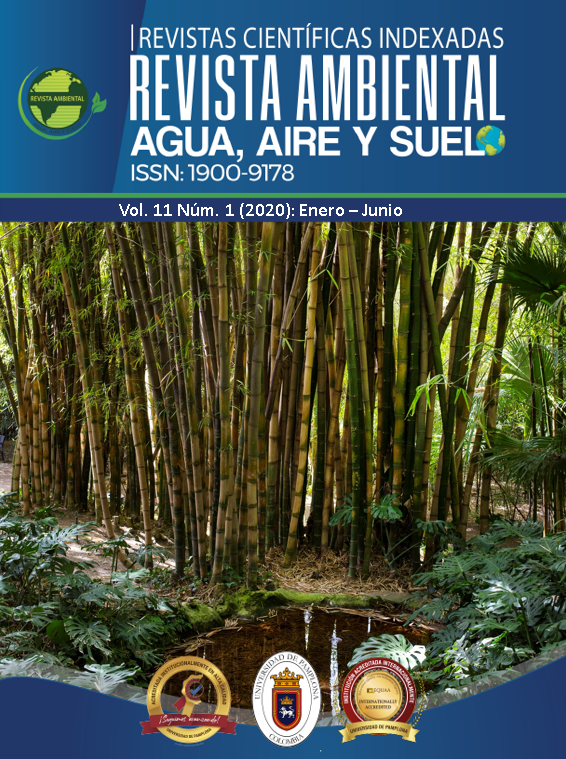Allelopathic potential of sugarcane straw residue (Saccharum SPP., HYBRID) for weed management
DOI:
https://doi.org/10.24054/aaas.v11i1.357Keywords:
tamizaje fitoquímico, alelopatía, metabolitos secundarios, fenoles, taninosAbstract
To contribute to scientific knowledge about allelochemicals present in a sugarcane hybrid (Saccharum spp., hybrid), a study was conducted to determine the secondary metabolites that could have allelopathic potential against weeds. Successive extraction was performed with solvents of increasing polarity (ethyl ether, ethanol, and water), followed by qualitative identification using color and precipitation reagents. To do this, 5 g of powdered plant material was used and the extraction was carried out with 50 mL of the solutions, by maceration with constant agitation in a Thys 2 sieve for 24 hours. It was then filtered to obtain the corresponding extracts. The phytochemical screening technique established by MINSAP was applied. The presence of resins, cardiotonic glycosides, phenols and/or tannins, flavonoids, triterpenes, coumarins, and quinones was found in the ethanolic extract; fatty acids in the ethereal extract; saponins, free amino acids, reducing sugars, flavonoids, phenols, and/or tannins in the aqueous extract. It is believed that the phenols and tannins present may have an allelopathic effect against weeds, making sugarcane straw a good candidate for weed management due to its potential as a herbicide.
Downloads
References
Angulo, W. J., Mendoza, J. A., & Uriel, H. U. (2017). Análisis de la vulnerabilidad por fenómenos de remoción en masa en la Cuenca Tanauca: Estudio de caso. Revista Ambiental Agua, Aire y Suelo, 8(2). https://doi.org/10.24054/19009178.v2.n2.2017.3276
Aremu, A. O., Masondo, N. A., Rengasamy, K. R., Amoo, S. O., Gruz, J., Bíba, O., & Van Staden, J. (2015). Physiological role of phenolic biostimulants isolated from brown seaweed Ecklonia maxima on plant growth and development. Plantar, 241(6), 1313–1324.
Bambanaste, R. (1986). El bagazo. En La industria de los derivados de la caña de azúcar (pp. 121–130). Editorial Científico Técnica.
Blanco, Y. (2006). La utilización de la alelopatía y sus efectos en diferentes cultivos agrícolas. Cultivos Tropicales, 27(3), 5–16.
Camargo, W. C. (2016). Modelación hidrológico-hidráulica de eventos de inundación en el río Bogotá (sector Tocancipá–Chía) usando HEC-RAS. Revista Ambiental Agua, Aire y Suelo, 7(2). https://doi.org/10.24054/19009178.v2.n2.2016.3267
Dayan, F. E., Owens, D. K., Watson, S. B., Asolkar, R., & Boddy, L. (2015). Sarmentine, a natural herbicide from Piper species with multiple herbicide mechanisms of action. Frontiers in Plant Science, 6, 222–259.
Gómez, S. A., Mora, W. J., & Ramón, B. (2017). Caracterización física y química de la fibra natural de esparto (Juncus ramboi subsp. colombianus) como alternativa de refuerzo en materiales compuestos. Revista Ambiental Agua, Aire y Suelo, 8(1). https://doi.org/10.24054/19009178.v1.n1.2017.3273
González, M. G., Almeida, R., Alfonso, F., Pardo, L., Barroso, G., González, J. R., & Rodríguez, M. (2010). Principales variedades de caña de azúcar propagadas en Cuba al cierre del 2008. Revista de la Asociación de Técnicos Azucareros de Cuba, 71(1), 19–25.
Gutierrez, T., Castellanos, C., & Hernández, N. (2016). El ordenamiento territorial frente a las consecuencias de los cambios climáticos. Revista Ambiental Agua, Aire y Suelo, 7(2). https://doi.org/10.24054/19009178.v2.n2.2016.3338
Lupini, A., Araniti, F., Sunseri, F., & Abenavoli, M. R. (2014). Coumarin interacts with auxin polar transport to modify root system architecture in Arabidopsis thaliana. Plant Growth Regulation, 74(1), 23–31.
Melo, J., Saavedra, S., & Ramón, J. A. (2017). Evaluación de la adsorción de Cu+2 y azul de metileno en biosorbentes de bajo costo obtenidos a partir de biomasa residual de la agroindustria de cítricos. Revista Ambiental Agua, Aire y Suelo, 8(2). https://doi.org/10.24054/19009178.v2.n2.2017.3277
Meneses, V. B., Álzate, D., & Mosquera, J. (2016). Sistema de optimización de las técnicas de planificación en agricultura de precisión por medio de drones. Revista Ambiental Agua, Aire y Suelo, 7(2). https://doi.org/10.24054/19009178.v2.n2.2016.3268
Moreno, C., & Rueda, L. (2016). La educación ambiental como herramienta para la recuperación de la cobertura vegetal, mediante prácticas agroecológicas en la comunidad minera ASOGRASTORRES, Asociación de Gravilleros de Sabana de Torres. Revista Ambiental Agua, Aire y Suelo, 7(1). https://doi.org/10.24054/19009178.v1.n1.2016.3260
Rodríguez, T. M., Castellanos, L., & Rodríguez, I. (2014). Manejo de plagas para la caña de azúcar en la Empresa Azucarera “Melanio Hernández”. Centro Agrícola, 41(3), 35–41.
Rodríguez, Y. A. (2017). Conservación de humedales en el marco de gestión de cuencas hidrográficas. Puerto Rondón–Arauca. Revista Ambiental Agua, Aire y Suelo, 8(2). https://doi.org/10.24054/19009178.v2.n2.2017.3281
Downloads
Published
Issue
Section
License
Copyright (c) 2021 REVISTA AMBIENTAL AGUA, AIRE Y SUELO

This work is licensed under a Creative Commons Attribution-NonCommercial 4.0 International License.










